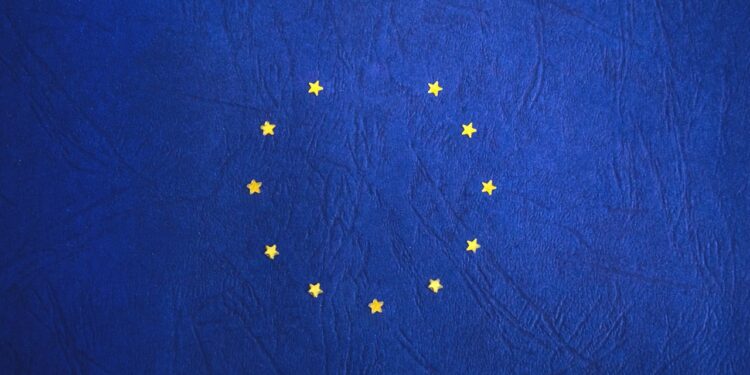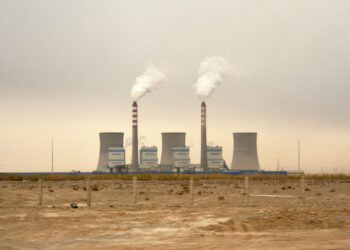Within weeks of taking office in December 2019, the members of the new European Commission unveiled a bold set of initiatives to fight climate change and protect the environment. Dubbed the European Green Deal, the proposed measures aim to slash the greenhouse gas emissions of countries in the European Union (EU) by 50% over the next decade—compared with the current target of 40%—and make Europe the world’s first climate-neutral continent.
The roadmap for achieving these laudable goals, however, includes a provision that will likely have considerable repercussions for EU trade partners. The EU is considering imposing a carbon border adjustment mechanism, more commonly referred to as a carbon border tax. The tax would reflect the amount of carbon emissions attributed to goods imported into the 27-nation region. Producers in countries with carbon-pricing mechanisms that the EU agrees are compatible with its own may be exempt.
Although the policy has important proponents in Europe, it would create serious near-term challenges for companies with a large greenhouse gas footprint—and a new source of disruption to a global trading system already roiled by tariff wars, renegotiated treaties, and rising protectionism. We estimate, for example, that a levy on EU imports of $30 per metric ton of CO2 emissions—one potential scenario—could reduce the profit pool for foreign producers by about 20% if the price for crude oil remains in the range of $30 to $40 per barrel. The levy could reduce profits on imported flat-rolled steel, in particular, by roughly 40%, on average. The impact of the added costs would be felt far downstream.
In some sectors, the carbon border tax could rewrite the terms of competitive advantage. European manufacturers may find that the cost of Chinese or Ukrainian steel that is produced in blast furnaces now compares less favorably with the cost of the same type of steel from countries that require more carbon-efficient methods, for example. Similarly, European chemical producers may cut their reliance on Russian crude oil and import more from Saudi Arabia, where extraction leaves a smaller carbon footprint. If few cleaner supply sources are available, EU companies could face a choice of either absorbing the added cost of the tax or passing it along to downstream consumers.
Although the exact mechanics and timing of a carbon border tax must still be determined and approved by legislators, CEOs should begin preparing now. The requirement to measure, report, and factor in the costs of a product’s carbon footprint is already in place in the EU, and it could soon become a requisite for companies that export to Europe as well, contributing to the mounting global pressure to prepare strategies that reduce emissions.
WHY A CARBON BORDER TAX APPEARS TO BE GAINING MOMENTUM
The concept of taxing carbon emissions as a means of providing businesses with a financial incentive to reduce greenhouse gas emissions has been proposed by numerous experts for decades—and not just in Europe. In fact, more than 3,000 US economists and all living former chairs of the Federal Reserve have endorsed a carbon tax.
Thus far, however, a carbon border tax has rarely been implemented. Nor is it clear how the policy would work in practice. The European Commission currently is exploring several options, each of which has benefits and challenges. (See the sidebar “Four Ways That the EU Could Tax the Carbon Footprint of Imports.”) The EU could exempt certain countries that already have similar carbon-pricing schemes in place. It could do so by negotiating new preferential trade agreements or updating existing ones, such as those with Australia, Canada, or Japan.
The carbon border tax has wide appeal in Europe. It is supported by the new president of the European Commission, Ursula von der Leyen, and member countries such as France, Germany, Poland, and Spain. The new European Commission, whose term extends through 2024, has declared environmental protection its highest priority. Indeed, in a recent media interview, von der Leyen said that the European Green Deal will be at the heart of the EU’s economic strategy to “bounce forward” from the COVID-19 crisis. By the end of 2018, the EU already had reduced greenhouse gas emissions by 23% since 1990. In fact, the EU is ahead of its official benchmarks for achieving its current emissions-reduction target of 40% by 2030, a goal that is enshrined in EU law. But environmental experts contend that emissions must be cut much further to fight climate change, so the new European Commission intends to raise the target to 50%.
Placing a carbon tax on imports could go a long way toward meeting this goal. Imports represent approximately one-quarter of the emissions of all goods consumed or processed in the EU. Such a tax is also popular among European manufacturers. Many have already been paying for carbon emissions since 2005 through the EU’s Emissions Trading System. The ETS places caps on emissions for most companies and then allows them to buy emission permits from other companies if they exceed their limits. European manufacturers, particularly those that produce carbon-intensive goods, such as steel and chemicals, have complained that plans to raise ETS carbon costs would put them at a disadvantage against imports from foreign manufacturers that are in countries with low environmental standards and that are not subject to such regulations, thus lowering manufacturing costs. From the perspective of European manufacturers, a carbon border tax could help level the playing field.
Depending on how the policy is designed, foreign trade partners could, of course, challenge a carbon border tax through the World Trade Organization or take retaliatory action in response. The concept also remains somewhat controversial within Europe: some critics view the tax simply as another trade barrier, while others view it as impractical or not worth the cost. Our view, however, is that the roadblocks are solvable and that the EU has the resources required to devise creative, workable policies to achieve its goal.
SECTORS THAT WOULD BE HIT THE HARDEST
A European carbon border tax would impact, either directly or indirectly, all industrial sectors that rely on imports into the EU and would influence sourcing decisions throughout entire value chains. In addition to EU importers that pay the tax, for example, it would also affect EU-based manufacturers that rely on imported inputs.
The degree of impact on industrial sectors would be largely influenced by two factors: carbon intensity and trade intensity. Carbon intensity figures convey the relative propensity of various sectors to contribute to the so-called greenhouse gas effect, a leading cause of global warming and other adverse environmental changes.1 Trade intensity, which conveys the degree to which goods are traded, is an important metric because it indicates how much carbon tax a given industry would have to absorb unless buyers switch to European-sourced products.22 For example, bulky, near-final goods, such as fabricated metal products and heavy machinery, are traded less frequently than raw inputs.
On the basis of these two factors, among the sectors most directly hit by the carbon border tax would be coke and refined petroleum products, as well as mining and quarrying. The carbon and trade intensities of each sector are high. Indeed, of the 44 sectors that the EU regards as high priorities for new carbon measures, 85% are related to materials, energy, and other sectors that provide raw ingredients for industrial processes. Sectors such as chemical products, basic metals, paper products, and nonmetallic mineral products, while less dependent on trade, would also be directly affected because of their high carbon intensity.
By Ben Aylor, Marc Gilbert, Nikolaus Lang, Michael McAdoo, Johan Öberg, Cornelius Pieper, Bas Sudmeijer, and Nicole Voigt
Read the full article at https://www.bcg.com/en-mx/publications/2020/how-an-eu-carbon-border-tax-could-jolt-world-trade.












